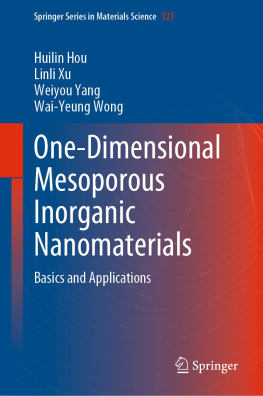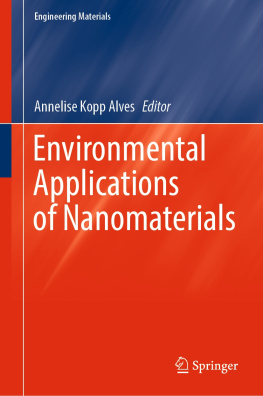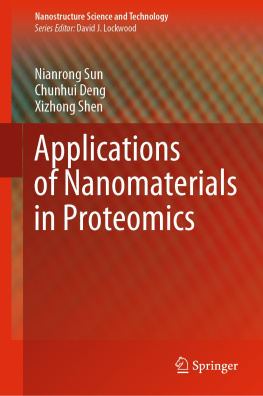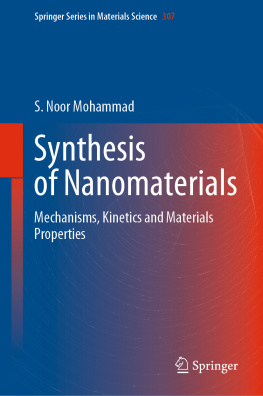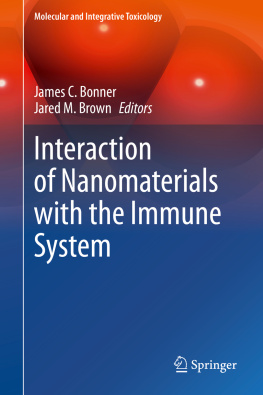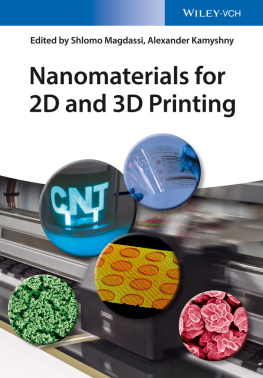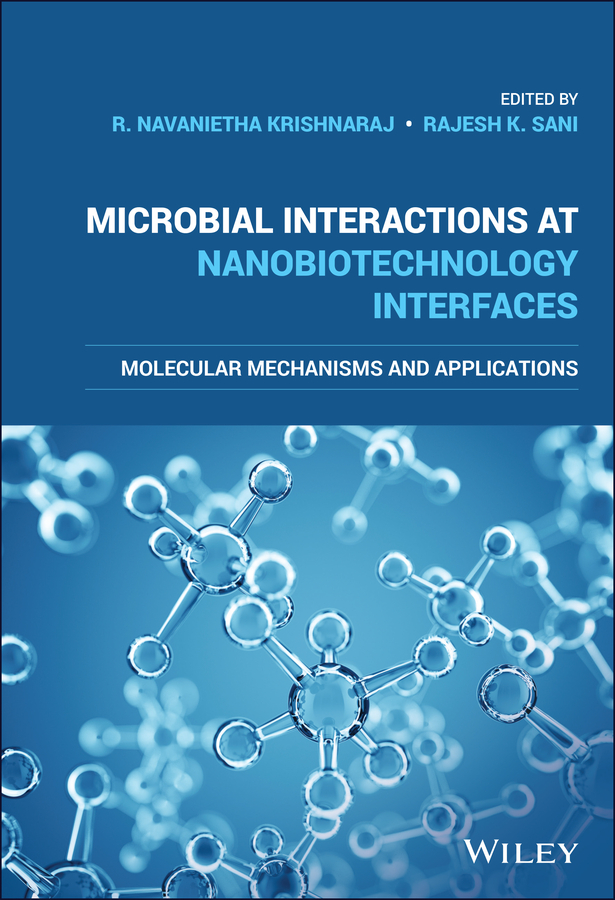
Table of Contents
List of Tables
- Chapter 1
- Chapter 2
- Chapter 7
- Chapter 8
- Chapter 9
List of Illustrations
- Chapter 1
- Chapter 2
- Chapter 3
- Chapter 4
- Chapter 5
- Chapter 6
- Chapter 7
- Chapter 8
- Chapter 9
- Chapter 10
- Chapter 11
- Chapter 12
Guide
Pages
Microbial Interactions at Nanobiotechnology Interfaces
Molecular Mechanisms and Applications
Edited by
R. Navanietha Krishnaraj
South Dakota School of Mines and Technology
Rapid City, South Dakota
and
Rajesh K. Sani
Department of Chemical and Biological Engineering
South Dakota School of Mines and Technology
Rapid City, South Dakota

This edition first published 2022
2022 John Wiley & Sons, Inc.
All rights reserved. No part of this publication may be reproduced, stored in a retrieval system, or transmitted, in any form or by any means, electronic, mechanical, photocopying, recording or otherwise, except as permitted by law. Advice on how to obtain permission to reuse material from this title is available at http://www.wiley.com/go/permissions.
The right of R. Navanietha Krishnaraj and Rajesh K. Sani to be identified as the authors of the editorial material in this work has been asserted in accordance with law.
Registered Office
John Wiley & Sons, Inc., 111 River Street, Hoboken, NJ 07030, USA
Editorial Office
111 River Street, Hoboken, NJ 07030, USA
For details of our global editorial offices, customer services, and more information about Wiley products visit us at www.wiley.com.
Wiley also publishes its books in a variety of electronic formats and by printondemand. Some content that appears in standard print versions of this book may not be available in other formats.
Limit of Liability/Disclaimer of Warranty
In view of ongoing research, equipment modifications, changes in governmental regulations, and the constant flow of information relating to the use of experimental reagents, equipment, and devices, the reader is urged to review and evaluate the information provided in the package insert or instructions for each chemical, piece of equipment, reagent, or device for, among other things, any changes in the instructions or indication of usage and for added warnings and precautions. While the publisher and authors have used their best efforts in preparing this work, they make no representations or warranties with respect to the accuracy or completeness of the contents of this work and specifically disclaim all warranties, including without limitation any implied warranties of merchantability or fitness for a particular purpose. No warranty may be created or extended by sales representatives, written sales materials or promotional statements for this work. The fact that an organization, website, or product is referred to in this work as a citation and/or potential source of further information does not mean that the publisher and authors endorse the information or services the organization, website, or product may provide or recommendations it may make. This work is sold with the understanding that the publisher is not engaged in rendering professional services. The advice and strategies contained herein may not be suitable for your situation. You should consult with a specialist where appropriate. Further, readers should be aware that websites listed in this work may have changed or disappeared between when this work was written and when it is read. Neither the publisher nor authors shall be liable for any loss of profit or any other commercial damages, including but not limited to special, incidental, consequential, or other damages.
Library of Congress CataloginginPublication Data applied for:
ISBN: 9781119617198
Cover Design: Wiley
Cover Image: iStock\MF3d
Preface
Nanomaterials have been realized as potential agents for several biological applications including therapy and diagnostics. Realizing the biological activity of nanomaterials and their importance for nanomedicine, the field of nanobiotechnology emerged to emphasize the toxic effects of nanomaterials and biological applications. The field of nanobiotechnology covers concepts on the biological synthesis of nanomaterials, characterization of biologically synthesized nanomaterials, and applications in the biological sector. The unique physicochemical characteristics of the nanomaterials offer interesting activities including antibacterial, antifungal, antiviral, and anticancer. Recent decades have evidenced tremendous advancements in nanobiotechnology research with applications in diagnosis, drug delivery, and therapy.
Considering the importance of the field, the book aims to provide a basic understanding about the about the interaction of nanomaterials with living cells/proteins/enzymes at a molecular level and factors influencing the interactions. This book covers specialized topics on protein nanoparticle interactions and factors influencing these interactions, shape and sizedependent activity of the nanomaterials, and surface functionalization of nanoparticles for stability/activity in biological systems. An interesting chapter covering the molecular factors and mechanisms that drives the anticancer activity of the nanomaterials. Understanding the surface factors of nanomaterials influencing the biological activity will help in reverse engineering of nanomaterials with tailored surface characteristics.
Overall this would be an ideal textbook for nanobiotechnology courses for chemical, biochemical, and biomedical engineering students. Glossary and reasoning type questions have also been included at the end of each chapter. This book will also help scientists to understand advanced concepts in nanobiotechnology and nanobiomanufacturing with specific characteristics. This book discusses concepts on factors influencing better microbial interactions and surface engineering approaches specifically focused on surface engineering of nanomaterials for biomedical applications.
The editors would like to thank all the authors for their valuable contribution and the Wiley editorial team for their support.
| 1 | Shape and SizeDependent Antibacterial Activity of Nanomaterials | Prashant Mishra |
| 2 | Size and ShapeSelective Synthesis of DNABased Nanomaterials and Their Application in SurfaceEnhanced Raman Scattering | Subrata Kundu |
| 3 | Surface Modification Strategies to Control the NanomaterialMicrobe Interplay | Vignesh MuthuVijayan |
| 4 | Surface Functionalization of Nanoparticles for Stability in Biological Systems | D. Sakthi Kumar |
| 5 | Molecular Mechanisms Behind NanoCancer Therapeutics | Aravind Kumar Rengan |
| 6 | Protein Nanoparticle Interactions and Factors Influencing These Interactions | Mala R. |
| 7 | Interaction Effects of Nanoparticles with Microorganisms Employed in the Remediation of NitrogenRich Wastewater | Sheeja Jagadevan |
| 8 | SilverBased Nanoparticles for Antibacterial Activity | Chittaranjan Patra |
| 9 | Microbial Gold Nanoparticles and Their Potential Biomedical Applications |
Next page

